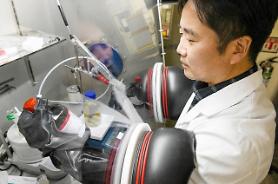
[Courtesy of DGIST]
Due to the high solubility, lithium polysulfide can be lost during repeated charging and discharging. A conventional strategy to mitigate such problems is to immobilize lithium polysulfide (LiPSs )within a rational sulfur host via physical and chemical adsorption, at the expense of relatively lower areal sulfur loading and the excess amount of electrolytes.
Researchers have used a redox-active interlayer strategy to develop high-energy non-aqueous lithium-sulfur (Li-S) batteries. "This study is expected to be a turning point in the research and development and commercialization of next-generation lithium-sulfur batteries, where energy density and stability are important," said Yu Jong-sun, a professor of energy science and engineering at Daegu Gyeongbuk Institute of Science & Technology (DGIST).
Yu's team has launched a joint study with a research team led by Khalil Amine, a professor of chemical sciences and engineering at Argonne National Laboratory. "We propose a polar and redox-active interlayer concept for high-energy and long-cycling Li-S batteries, in which sulfur is embedded into a polar platelet ordered mesoporous silica to form an interlayer," researchers said in their paper published on the website of Nature Communications, a peer-reviewed scientific journal.
"This interlayer not only fulfils the role of effectively preventing the shuttling of long-chain polysulfides but also contributes to enhancing the areal capacity to the cell," the researchers said.
Lithium-sulfur batteries exhibit poor cycle life and low energy content owing to polysulfides shuttling during cycling. A typical Li-S battery is composed of a Li metal anode and a sulfur cathode, separated by a polypropylene separator and a Li+-conducting organic electrolyte.
"We report the development and testing of redox-active interlayers consisting of sulfur-impregnated polar ordered mesoporous silica. Differently from redox-inactive interlayers, these redox-active interlayers enable the electrochemical reactivation of the soluble polysulfides, protect the lithium metal electrode from detrimental reactions via silica-polysulfide polar-polar interactions, and increase the cell capacity," the research team said.
Copyright ⓒ Aju Press All rights reserved.



